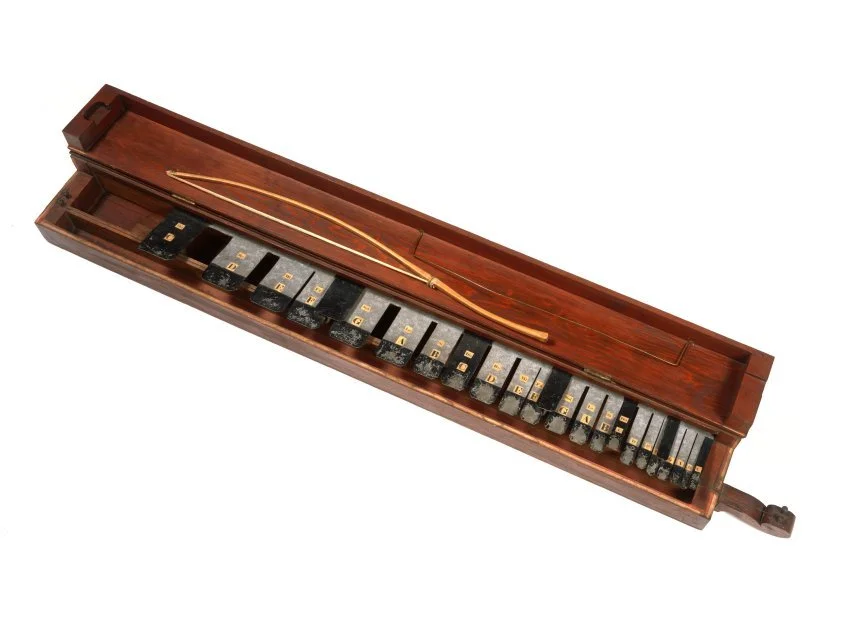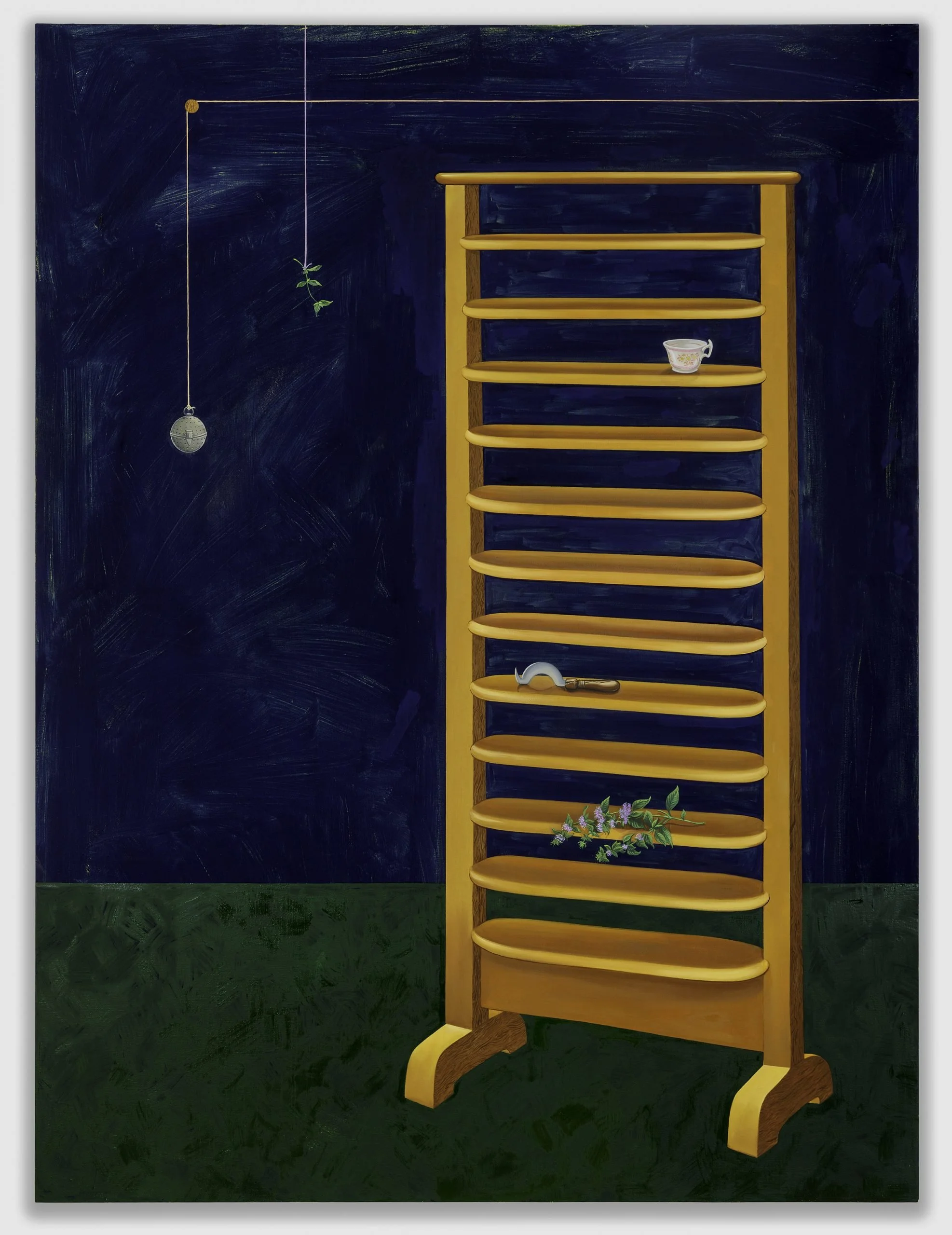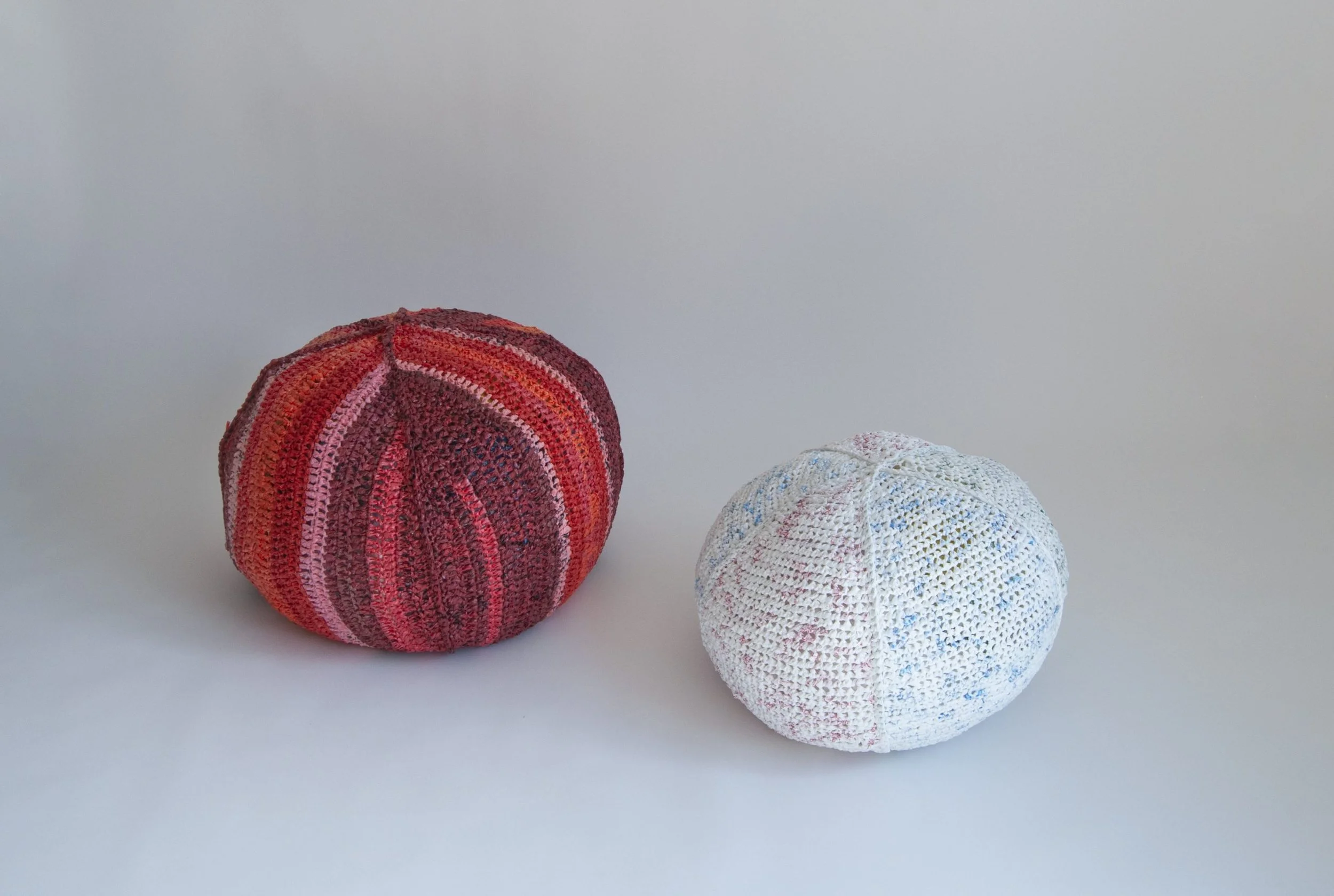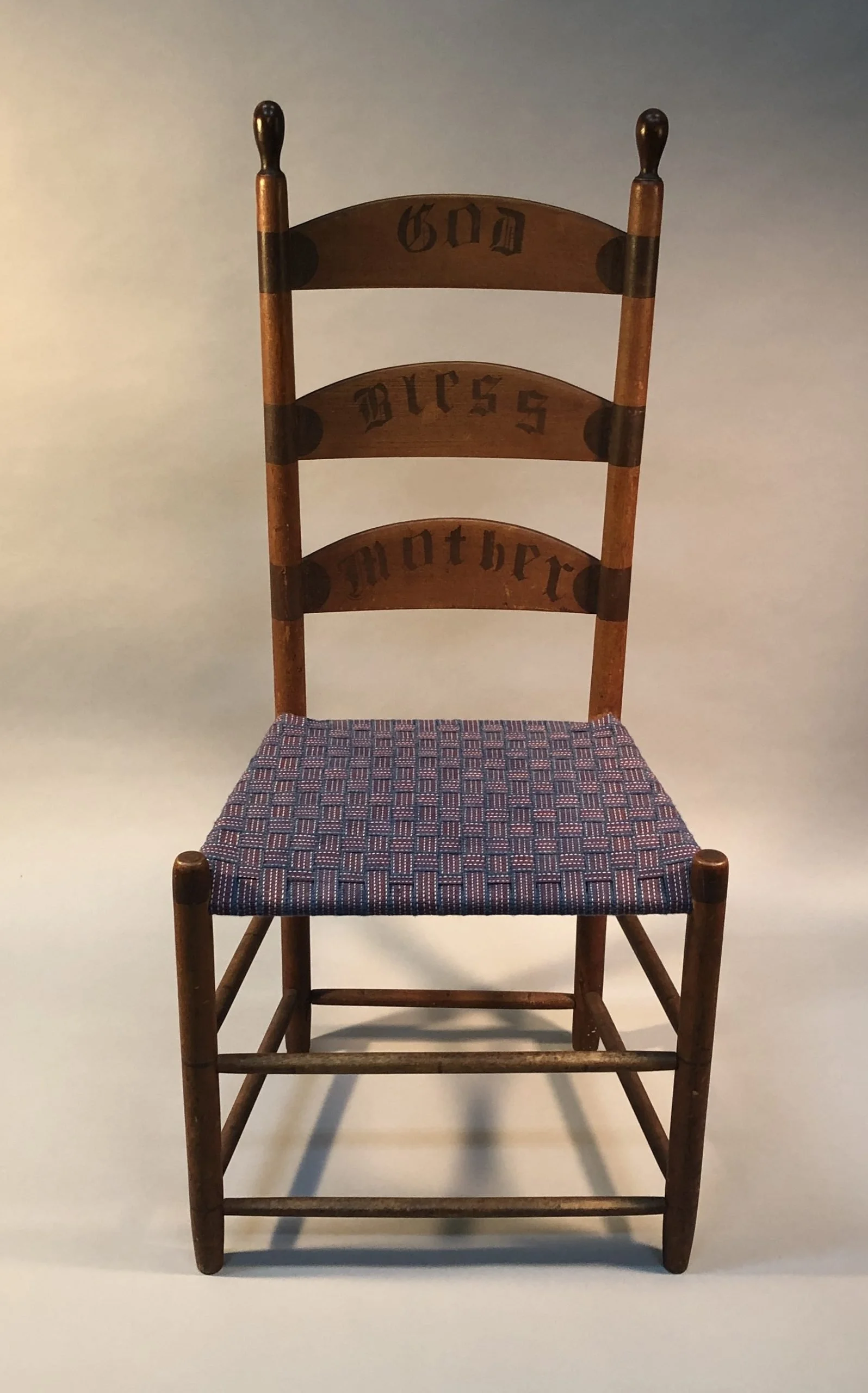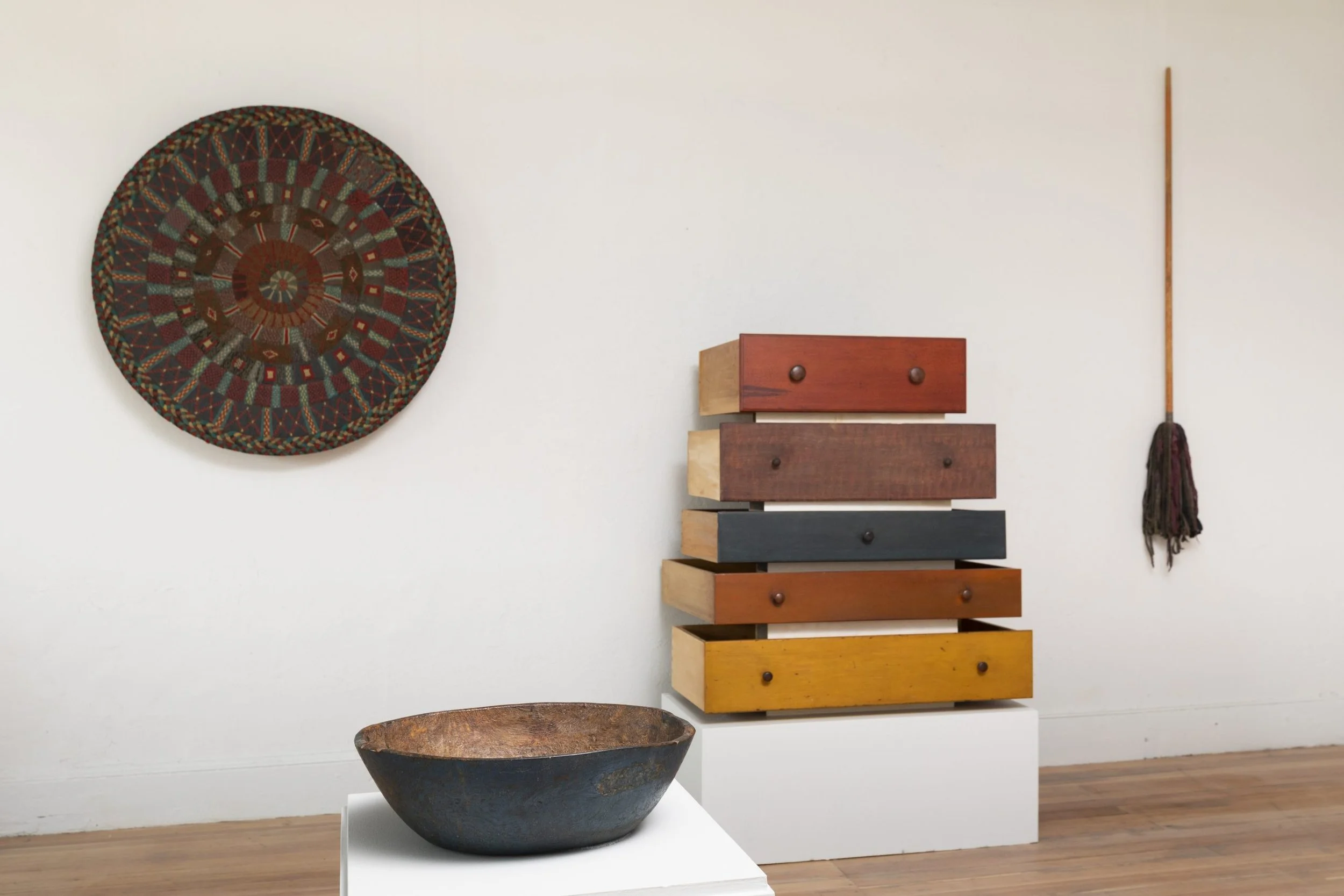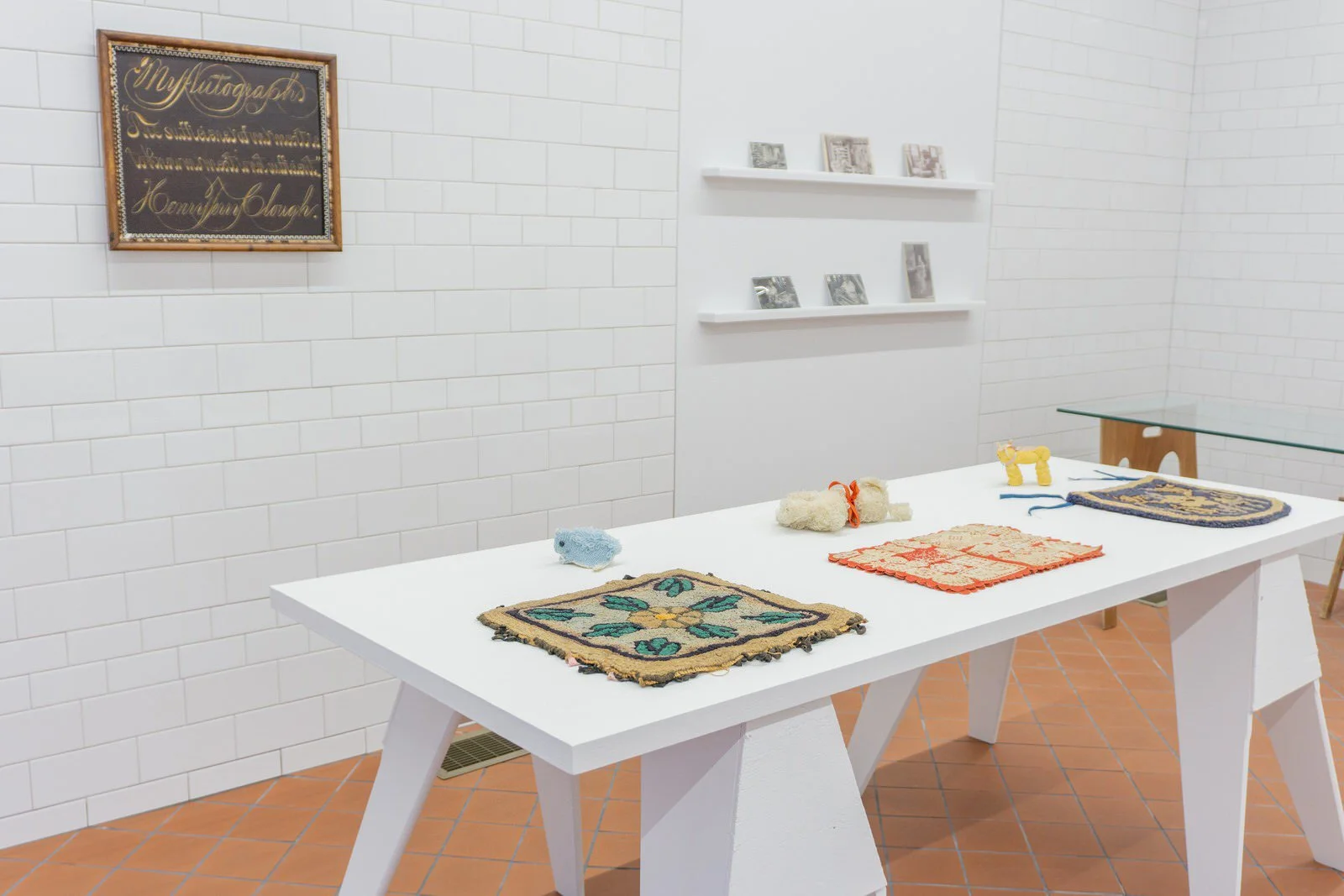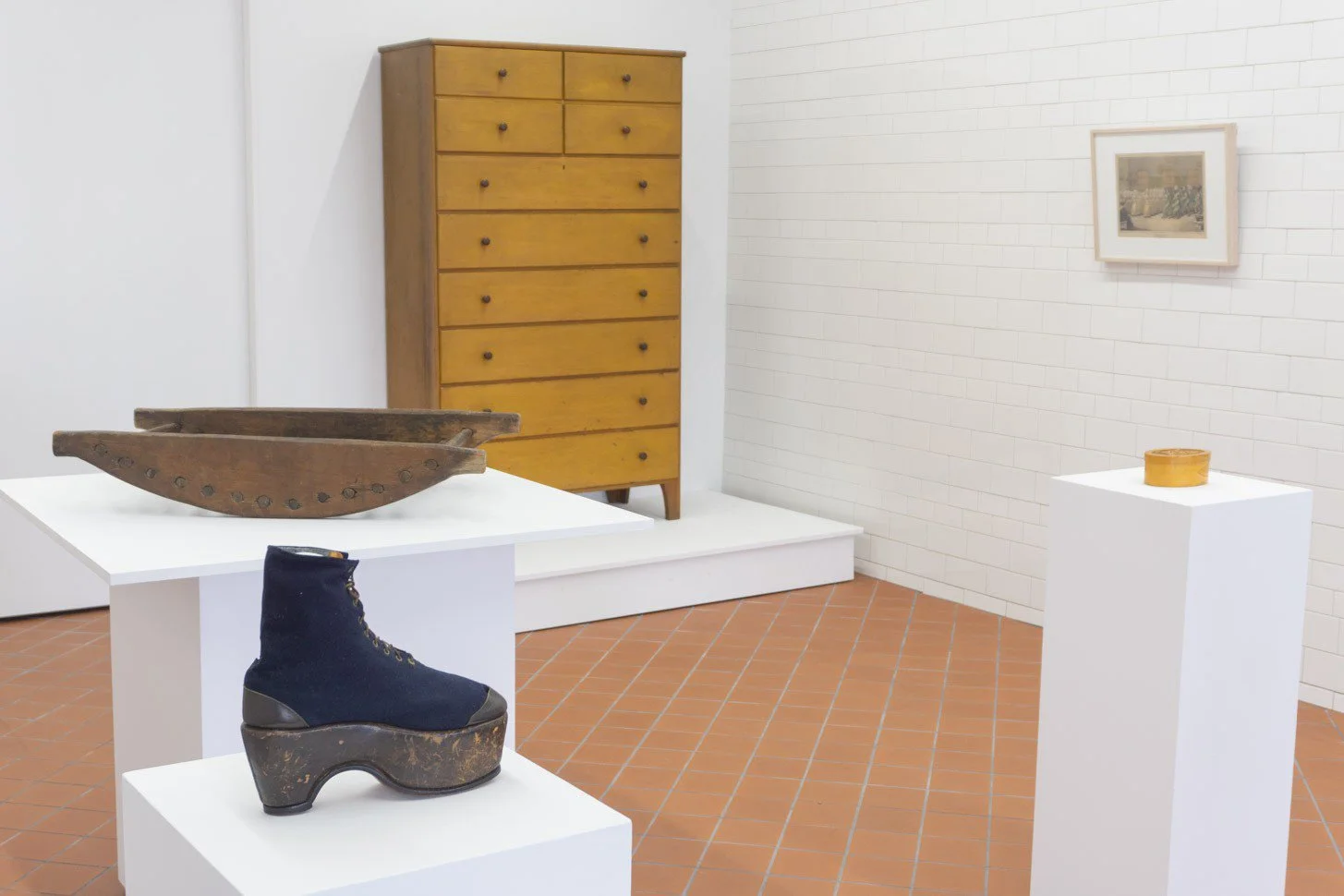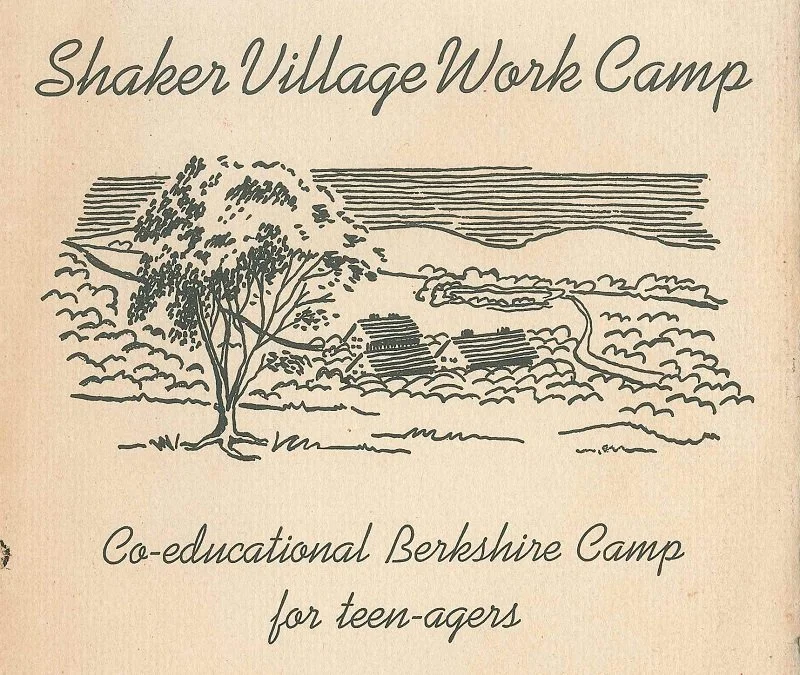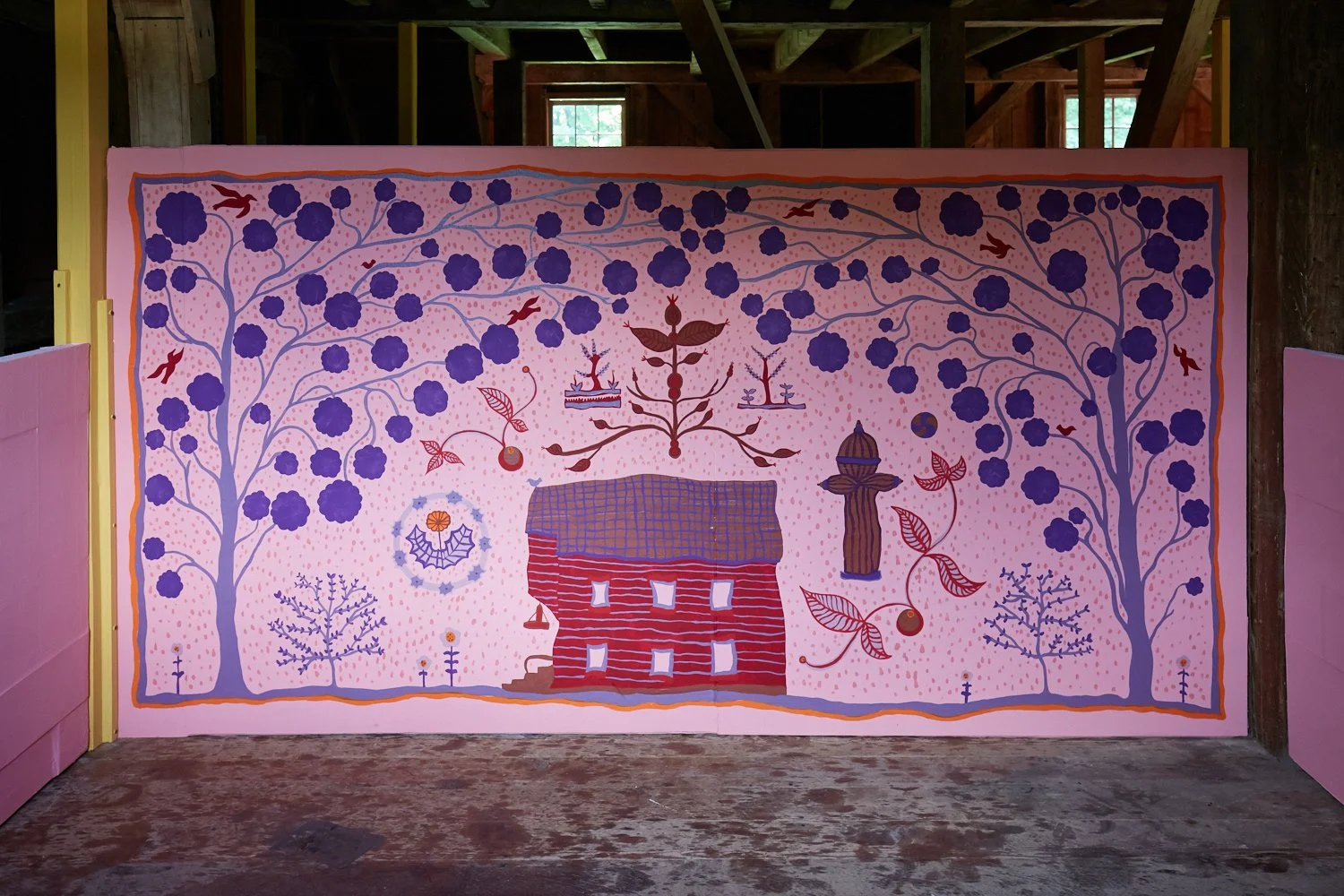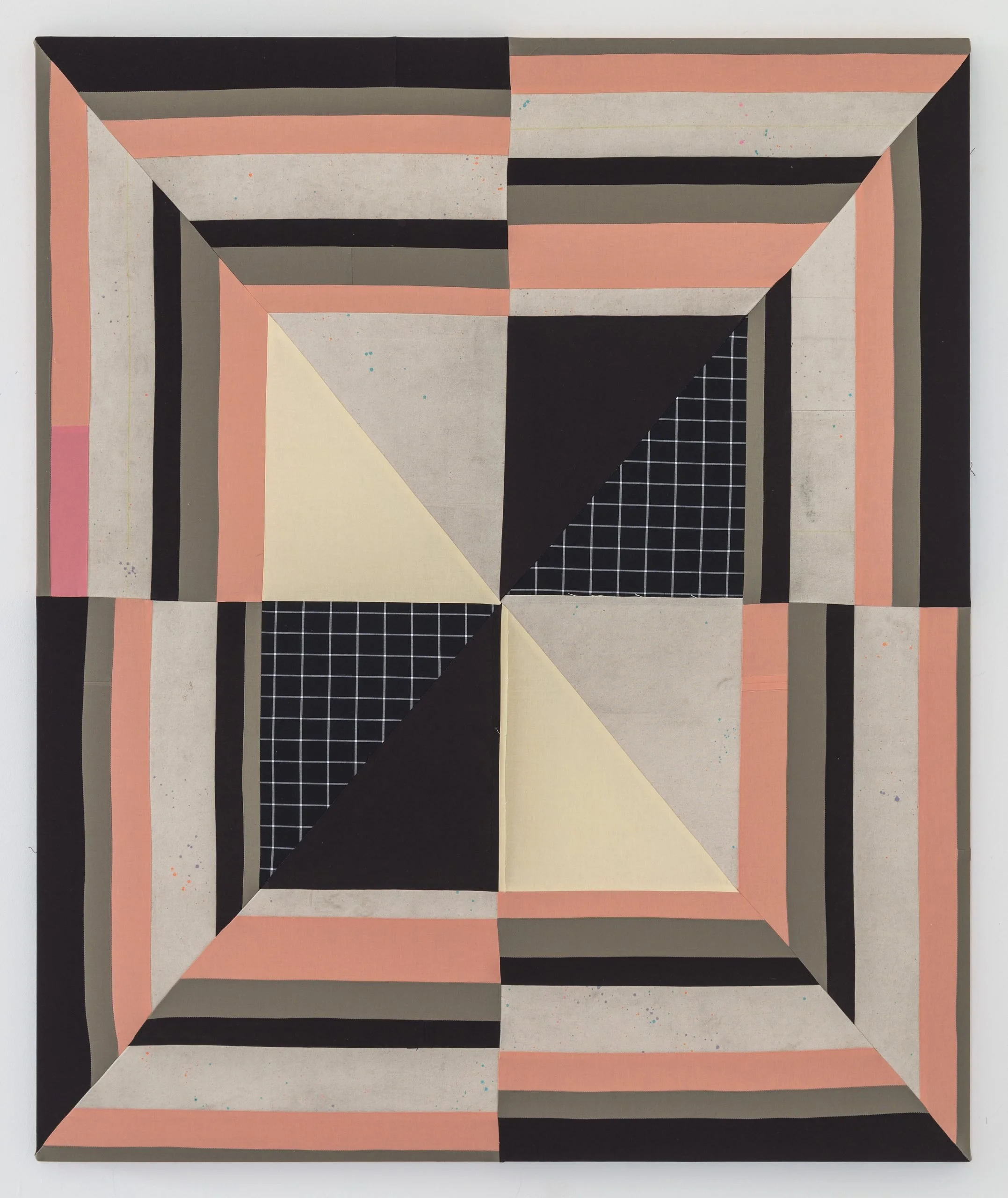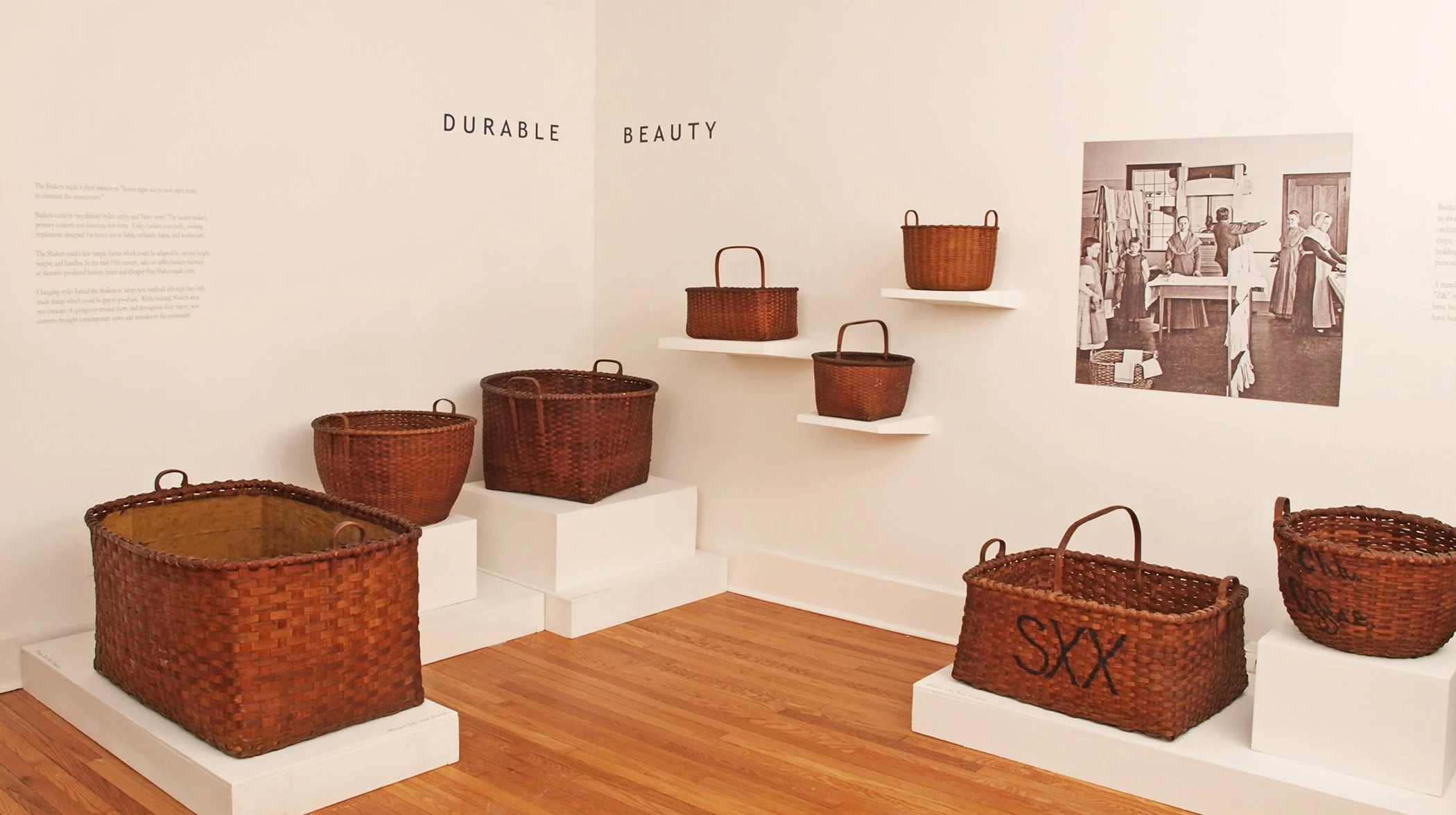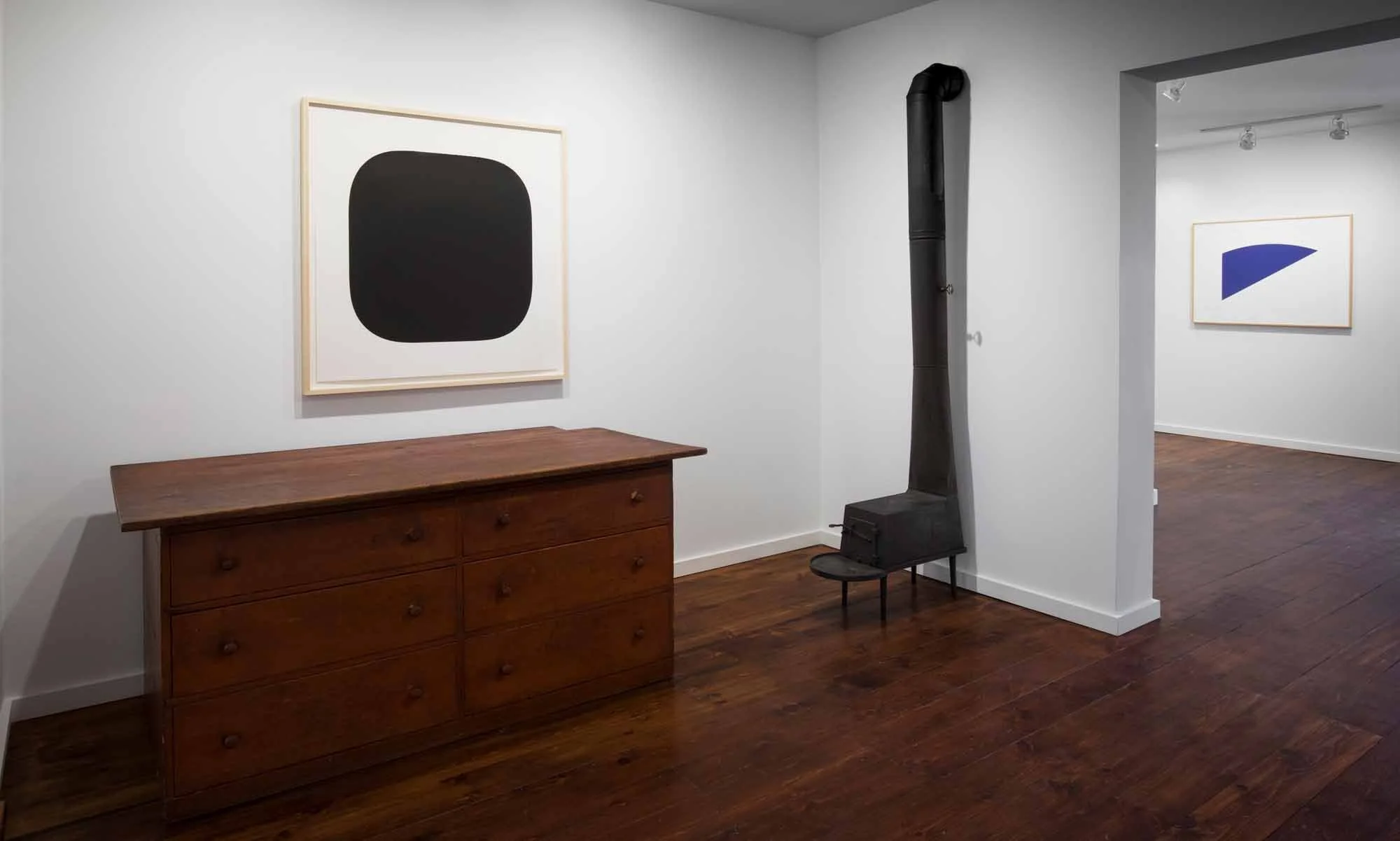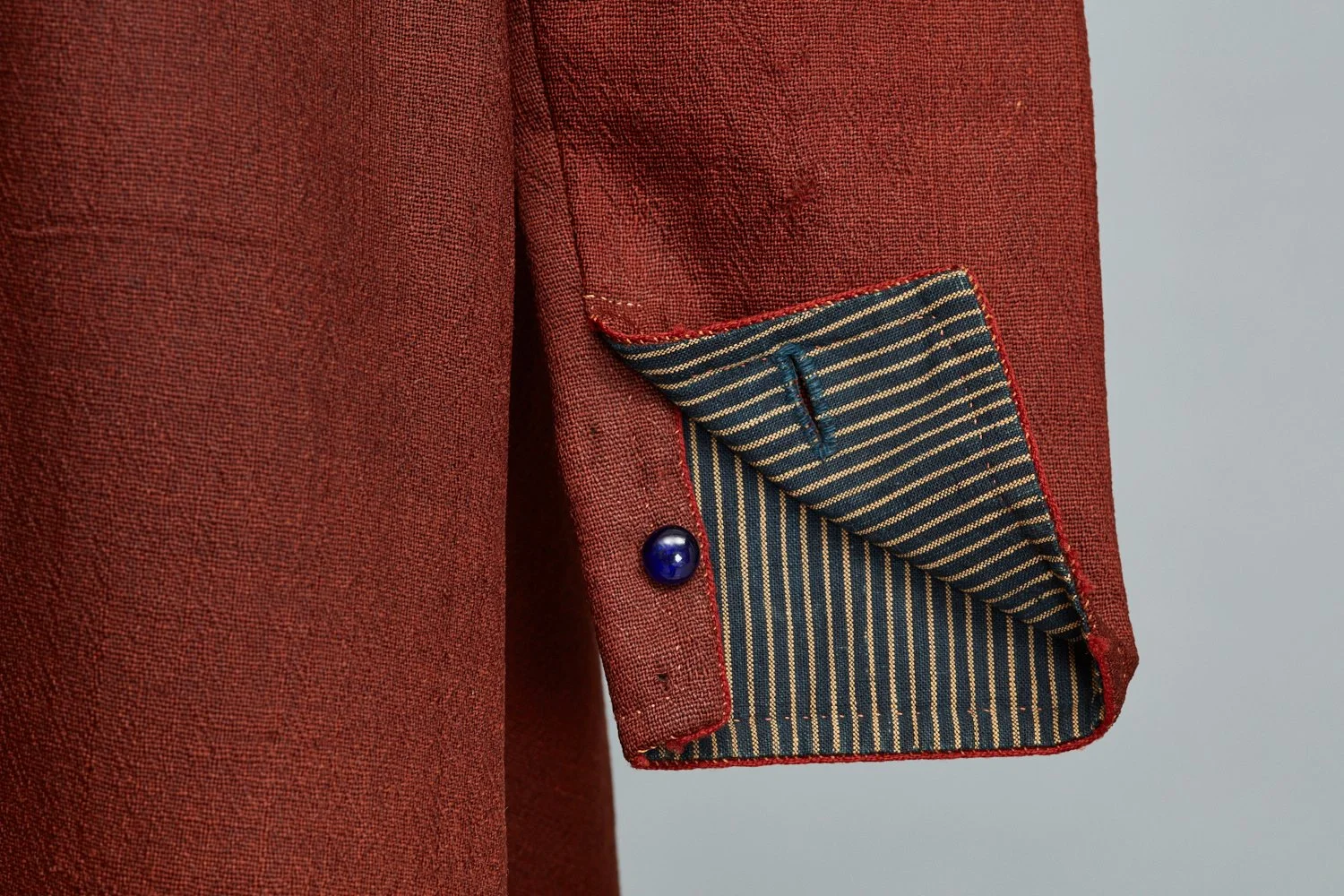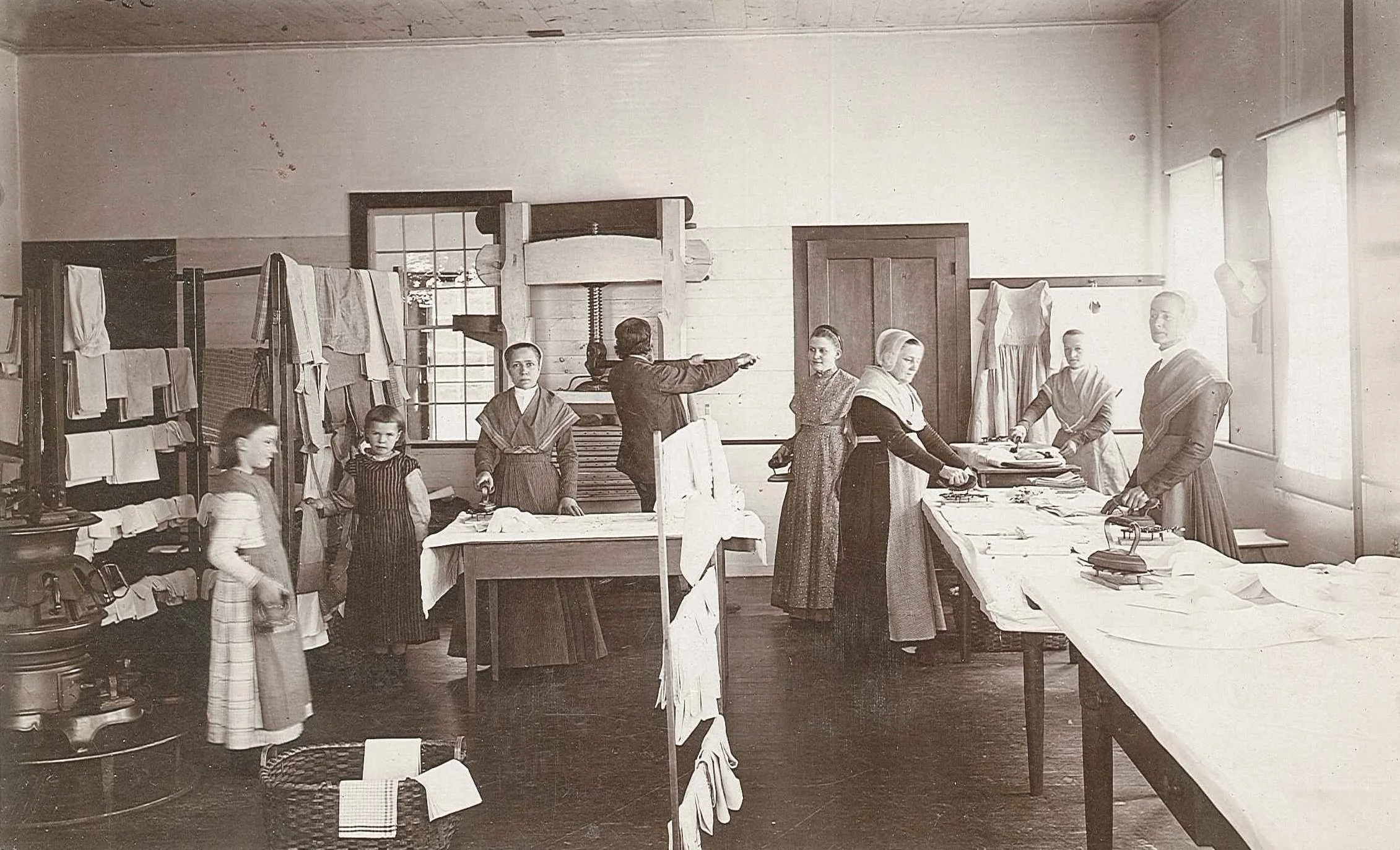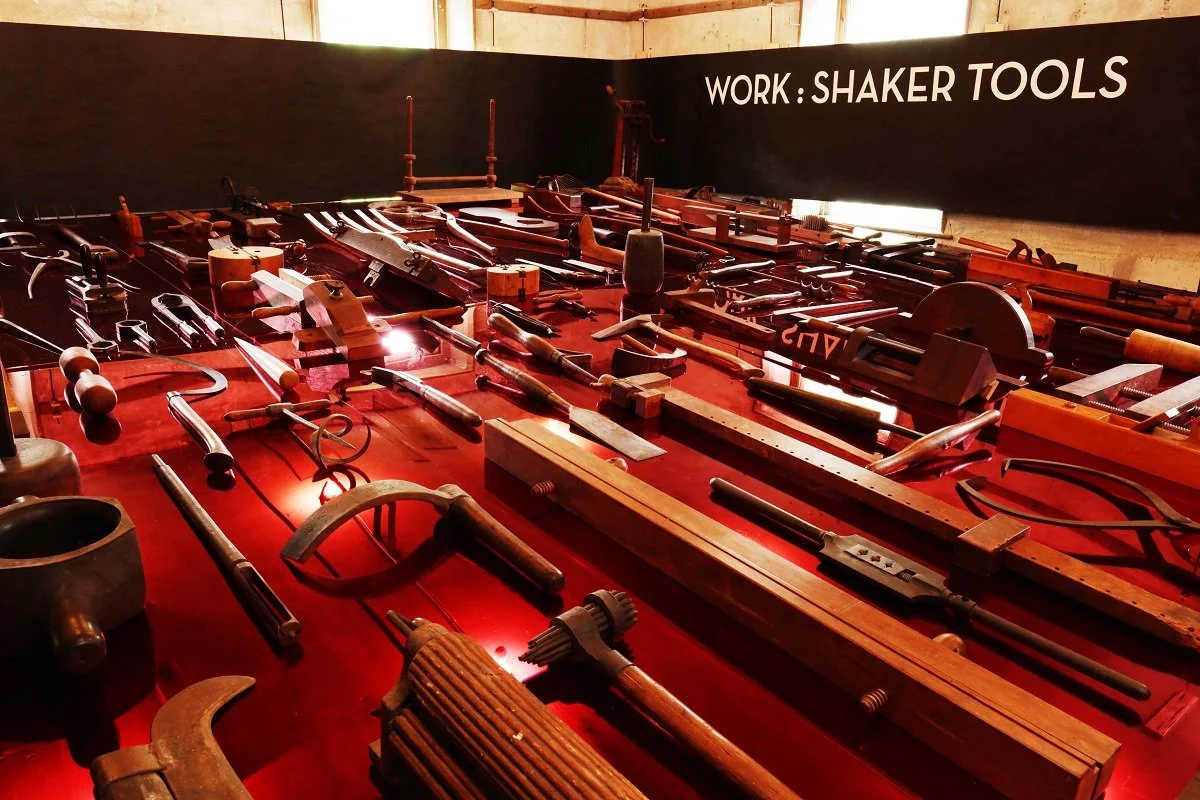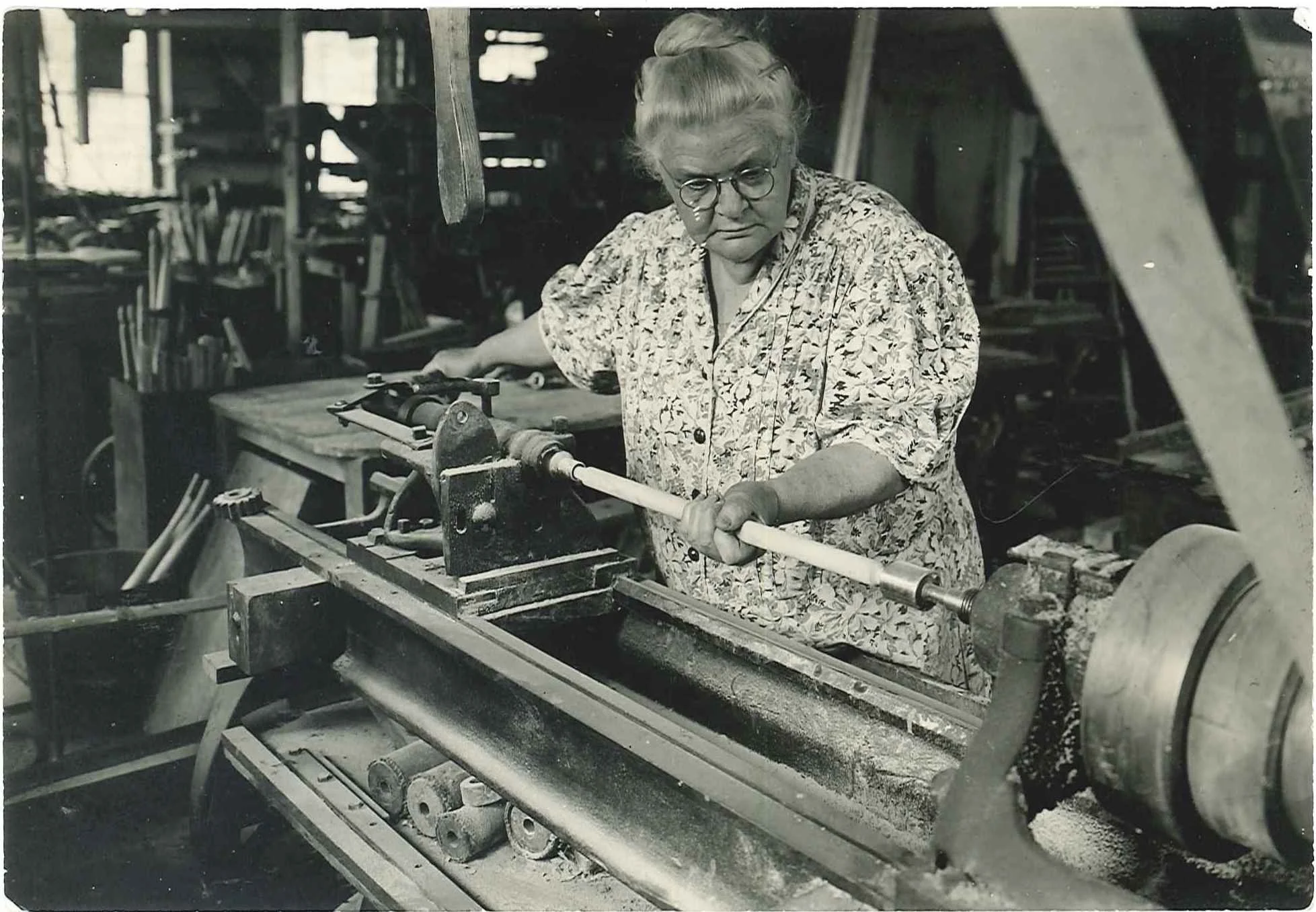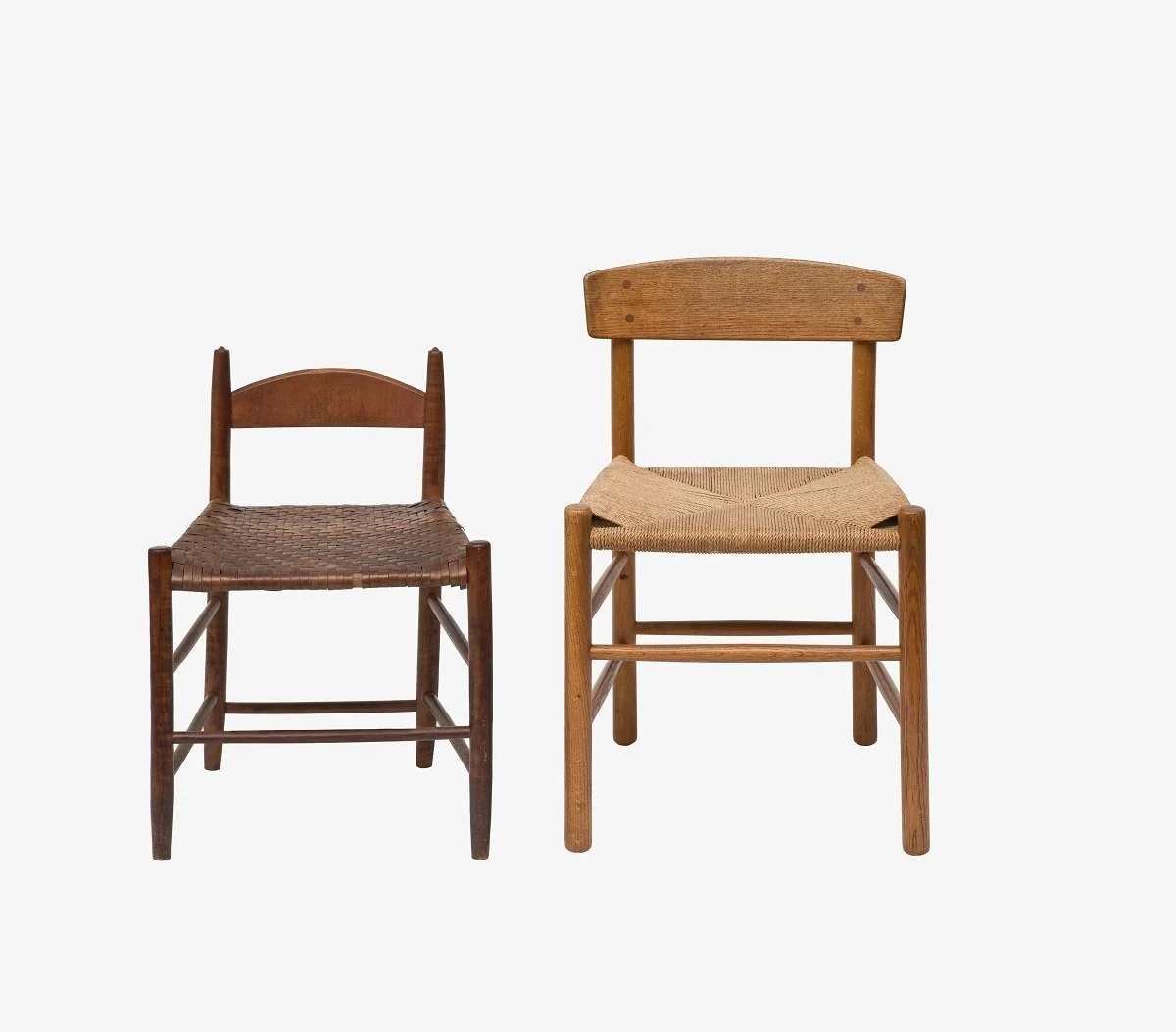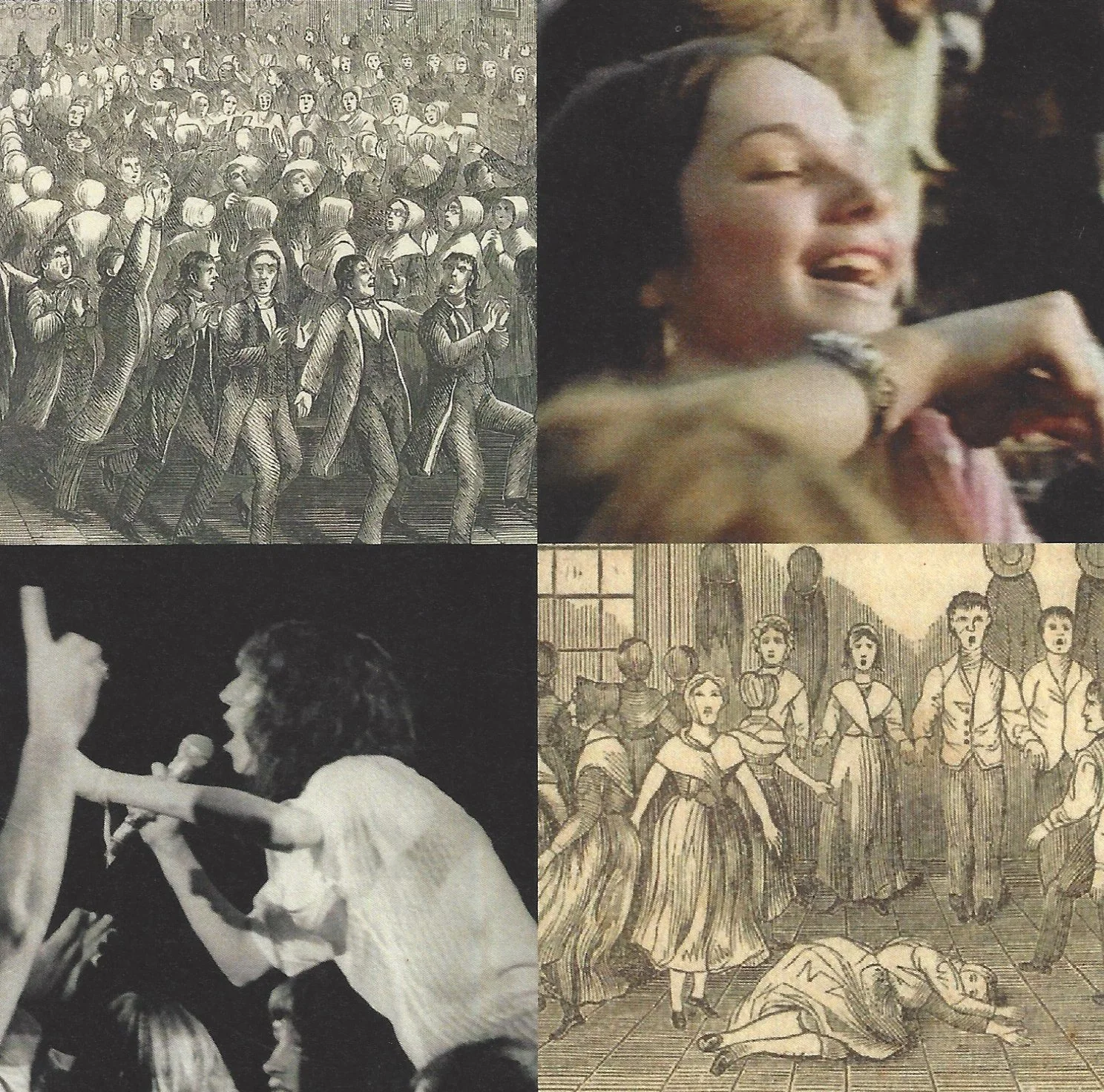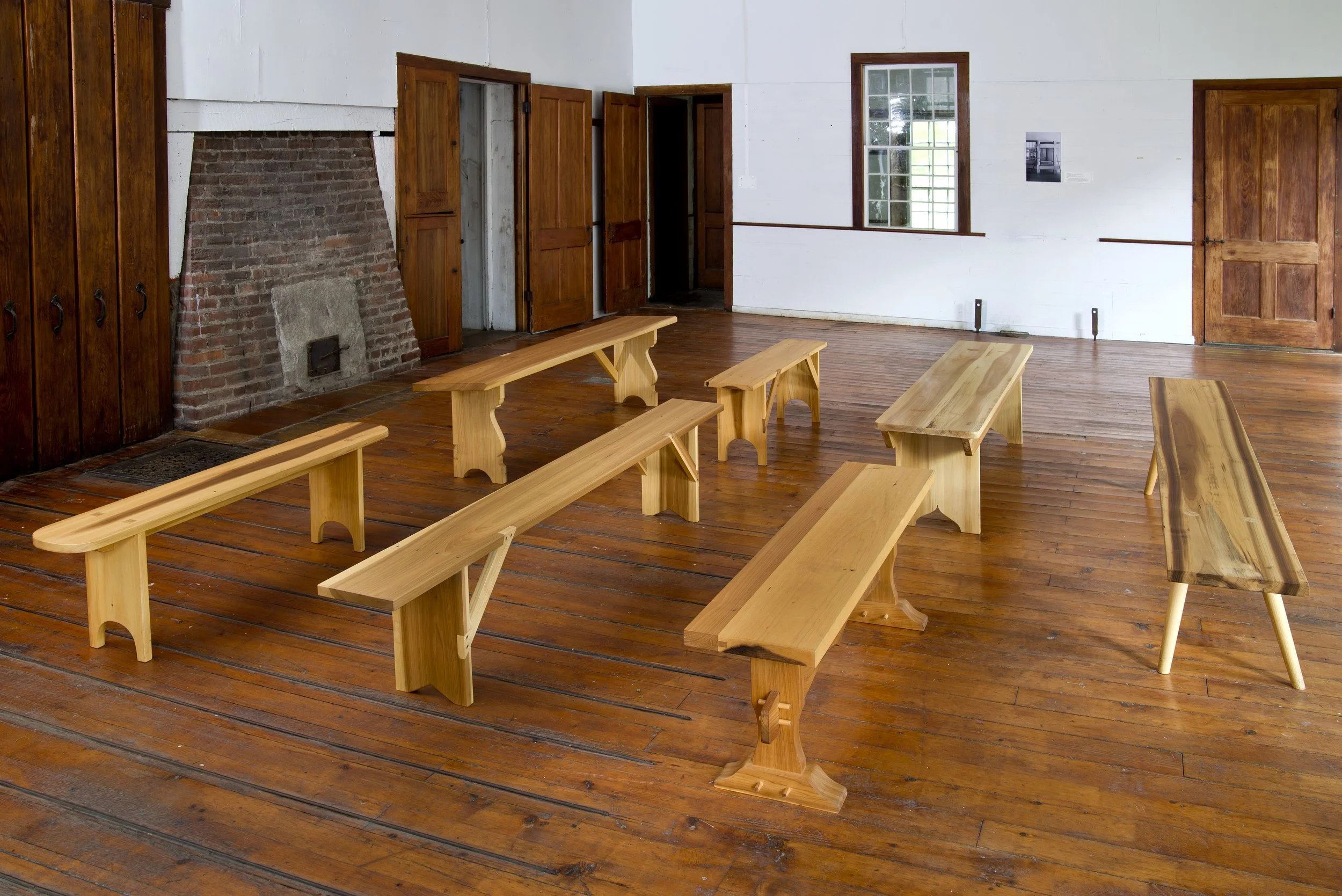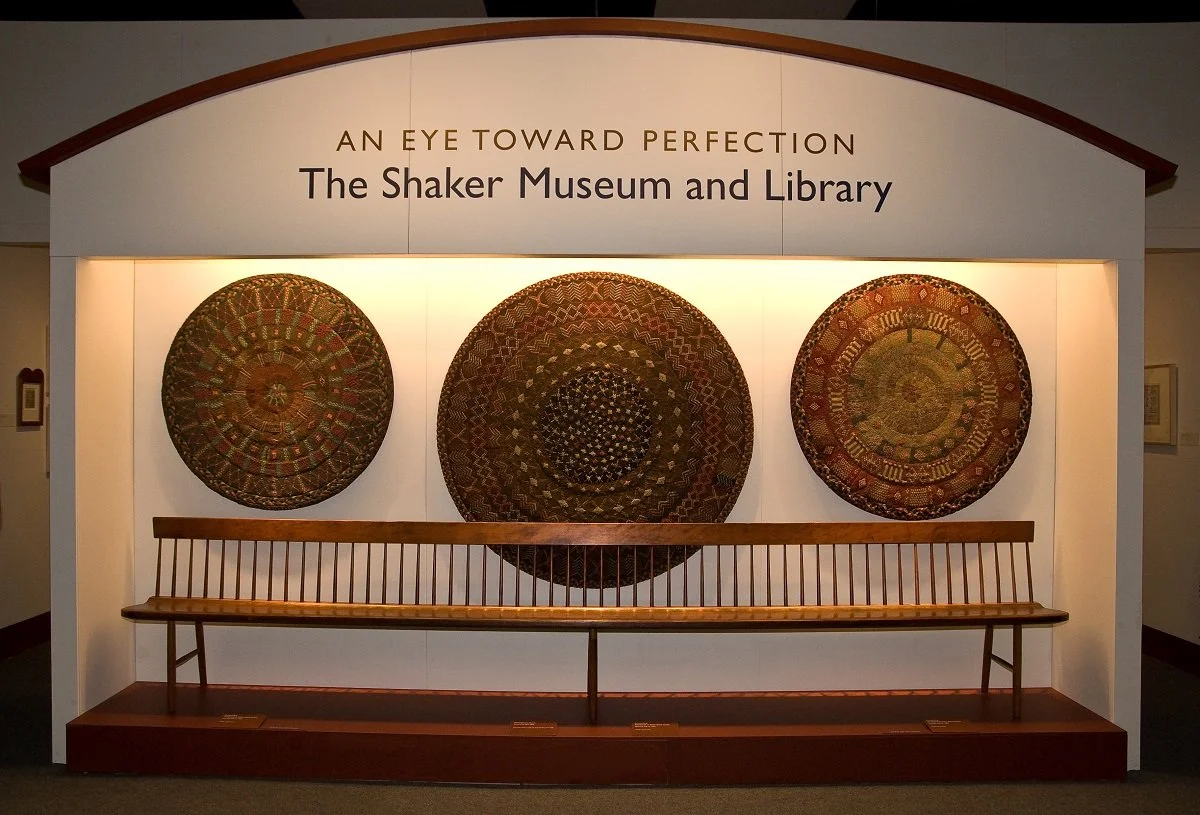Exhibitions
While the collection awaits the construction of its new home, we have the privilege of bringing to you curated exhibitions of its holdings. Presently in nearby Kinderhook, these small but powerful vignettes, covering a wide range of topics, are often done in conjunction with artists.
Current location for Pop-up is the Kinderhook Knitting Mill, 8 Hudson Street, Kinderhook, NY
Artists Frances McDormand and Suzanne Bocanegra have joined forces with Shaker Museum to present Cradled, a thought-provoking exhibition that explores the transcendent impact of the Shakers’ communal embrace from cradle to grave through objects, values, and inspired modern-day artistic expression.
Shaker Museum announces its summer 2024 exhibition, Unexpected Shaker.
True to its title, this pop-up exhibition at the museum’s gallery space in the Kinderhook Knitting Mill focuses on unusual, lesser-known, and one-of-a-kind objects in the museum’s collection of over 18,000 material objects of Shaker culture.
Shaker Museum Director of Library & Collections Jerry Grant explains the inspiration for the exhibition’s theme: “In a 2019 article in Mortise & Tenon magazine, Brother Arnold Hadd of the Sabbathday Lake, ME, Shakers remarked that museums tend to exhibit Shaker objects universally agreed to represent excellence in Shaker design. These examples, however, fall short of telling the whole story of the Shakers.
Shaker Museum announces its first 2024 exhibition, Palm to Poplar: Devotional Labor, coming to the pop-up gallery at the Kinderhook Knitting Mill. This exhibition, featuring the work of artist and educator Caitlin MacBride, will run from Saturday, February 3, through Sunday, April 28, 2024.
Caitlin MacBride is known for work that explores the connection between art and everyday life, engaging material culture and artifacts in an examination of labor and desire. In Palm to Poplar, Shaker Museum will showcase MacBride’s paintings of Shaker objects, providing visitors with a fresh perspective on these common, yet historically significant items. Her work will be displayed alongside pieces from Shaker Museum’s archive that have inspired her, creating a dialogue between the past and the present, the material and the ephemeral.
When you make a product by hand, it automatically has a story. The fact that you have chosen to invest your time, energy, and skill to produce something means there has to be a deeper purpose to the object. This is clearly evidenced in “The Alchemy of Re.Use” – a new exhibition at the Kinderhook Knitting Mill in New York, curated by hettler.tüllmann and the Shaker Museum – where every item has been created with care and meaning.
The provenance-soaked approach of fashion designer Emily Adams Bode Aujla takes new shape with ‘The Commercialisation of Shaker Knits’, an exhibition for the Shaker Museum that traces the development of knitting from the late 19th century to the present day, curated by Bode Aujla and currently on view at the Kinderhook Knitting Mill in Kinderhook, New York.
With Inscribed, Shaker Museum presents objects made of wood that have been marked in some way – with stenciled or hand-painted notations or incised by stamping or carving names or initials into wood – all of which provide information about how the objects were used, who used them, or where they were used. Although Shakers held all things in common and were expected to treat community property as such, it was common for members to mark tools with their names or initials to notify others that they were the primary user. After all, cabinetmakers did not expect others to use, or even more concerning, to sharpen their tools.
Shades of Shaker showcased the Shakers’ unique design aesthetic. The dynamic presentation of signature Shaker furniture pieces, clothing, household equipment, rugs, and textiles illustrated how Shakers used vibrant yellows, blues, and reds as part of their overall design vernacular. Most humans recognize and respond to color. Shakers were no different. They produced color in their paints, stains, and dyes using available natural pigments and dyestuffs with traditional recipes until commercial pre- mixed paints came on the market – then they bought these products.
Through a selection of Shaker material chosen by artist Katie Stout from the Museum’s permanent collection, Fringe Selects explores the breadth of Shaker objects by taking a closer look at the objects on the “fringe”—colorful, ornamental, and less well-known than the minimalist, iconic Shaker pieces. Also on view are two new chairs created by Stout as a response to her exploration of Shaker material culture.
Stout states,
My initial interest in Shaker design came from the Shakers’ sense of material and how even the simplest object feels like a celebration and an exaltation of spirit. Their resourcefulness, simple solutions, and entrepreneurial genius have always been inspiring to me. While Shaker design is typically presented as cold, bald, and minimal – a manifestation of their virtues of purity and honesty – the truth is that the Shakers loved ruffles and color! I have found that the purity and honesty of Shaker design is reflected in the act of making, not just in minimal design, which resulted in a wide array of life affirming objects and art.
When Ann Lee and a small group of followers left England and arrived in the United States in 1774, they established Shakerism as both a religion and a way of life. The Shakers were guided by core values of conviction, integrity, inclusion, and innovation, and they believed society could be perfected, and a paradise on earth created, through communal living, gender and racial equality, pacifism, confession of sin, celibacy, and separation from the world. Those who chose to become Shakers entered a secluded community that expected hard work and great self-discipline and sacrifice. For the Shakers, the routines of daily life were a place to demonstrate one’s faith.
Shaker Village Work GroupThe Shaker Village Work Group was a co-ed summer camp for urban teenagers that operated from 1947 until 1973 on a site formerly owned by the Mount Lebanon Shaker community. The campers, known as “villagers,” lived in and helped to restore Shaker buildings, created Shaker-style crafts, operated a camp store, and conducted tours for visitors. In addition, villagers had the opportunity to play sports, go on field trips, participate in a variety of creative arts, practice trades such as woodworking and weaving, and more. They also learned Shaker songs and dances, which they performed at the Shaker Museum’s annual Antiques Festival for a number of years.The camp, originally called the Shaker Village Work Camp, was founded and run by Jerome and Sybil Count, who purchased the buildings and property of the Mount Lebanon South and West Families in 1946.
On view at the Mount Lebanon historic site from June through October, 2019, Granary was a solo exhibition by artist Amie Cunat.
Cunat’s work reimagined the Granary’s historic function by reconstructing its storage structures and elevator with paper materials and vibrant color choices. As visitors traversed around the grain bins, they found areas of its walls richly painted with imagery influenced by Shaker gift drawings.
The Granary, where the exhibition was installed, was built by the Shakers in 1838 to store oats, wheat barley, and rye and is a rare and early example of a commercial-sized granary on a farm.
Quiet March to a Warring Song shared the work of nine contemporary artists whose work challenges or reveals headstrong histories or existing socio-political establishments. Housed within a Shaker Forge at the historic Mount Lebanon Shaker site, the exhibition reimagined the building’s past function. In addition to this, the show readdressed early American ideals, such as the values nurtured by the Shakers—reverence to craft and labor, importance of community, racial inclusivity, equality of the sexes—and how they persist in contemporary societal relevance during a time of political uncertainty.
Participating artists included Paolo Arao, Chloë Bass, Piotr Chizinski, Mark Thomas Gibson, Doug Johnston, Mary Lum, Carl Ostendarp, Casey Ruble, and Anne Wu. Exhibition design was by architect and designer Lucie Rebeyrol. A printed catalog accompanied the show with an essay by Claire Selvin. The exhibition was part of the Shaker Museum’s multi-part collaboration with curator Amie Cunat to foster relationships between Shaker cultural legacy, contemporary art, and the town of New Lebanon and surrounding communities. This project was generously funded by a Regional Economic Development Council grant from the New York State Council on the Arts.
Shaker craftsmen were highly skilled and their products were an expression of their worldview. Labor was a form of worship and it was the duty of each believer to live purely and to strive for perfection in everything they did.
Baskets in particular are coveted for their simple, utilitarian forms and durable construction. Shakers manufactured both utility baskets and “fancy-work” baskets; fancy baskets were sold in their shops alongside other everyday items such as brooms, bonnets, and chairs.
In 1970, the American artist Ellsworth Kelly (1923-2015) wrote, “Everywhere I looked, everything I saw became something to be made, and it had to be exactly as it was, with nothing added. It was a new freedom; there was no longer the need to compose. The subject was there already made, and I could take from everything.” For Kelly, as for the Shakers, there was no need to invent or embellish.
The earliest Shakers dressed no differently than their counterparts in the world. The style of dress they adopted early in the 19th century was meant to ensure that Shakers were focused on matters of the spirit rather than the body and ego, and helped to keep everyone in union, feeling as an equal to one another. Yet Shaker clothing was made attractive by the quality of their construction, materials used, and fine finishing details.
Who doesn’t enjoy sliding between freshly laundered line-dried sheets or wrapping up in a fluffy towel still warm from the dryer? Keeping clothes clean has been part of human life for millennia as have been the traditions that developed around this chore. “Monday we wash, Tuesday we iron, Wednesday we mend,… “ the sentiment if not the exact words of nursery rhymes and hopscotch songs through the ages emphasizes that washing clothes was part of the rhythm of family life. The Shakers, just like their neighbors adhered to this tradition – a tradition that aimed at making sure, even in rainy weather, clothes were clean by the Sabbath. For Shakers, the challenges faced by a neighboring family of seven – toughest stains removed, socks matched, and clothes folded and returned to the right person with missing buttons replaced – increased significantly for their family of seventy.
The Shaker Museum was born out of a passion for tool collecting. The Museum’s founder, John S. Williams, Sr., when he moved to Columbia County in the mid-1930s began collecting tools related to farming and trades that supported farming. When he became aware of the Shakers still living at Mount Lebanon and found that they still had tools in their workshops and barns available for sale, he focused his collecting on Shaker tools and eventually other objects related to their lives. The collection quickly grew to several thousand tools, ranging from the smallest drill bits to a blacksmith’s trip-hammer weighing several tons. Williams originally organized his tools by trades, setting up a Shaker cabinetmaker’s shop, a shoe shop, a tinsmith’s shop, a basketmaker’s shop, a tailor’s shop, and so on. He invited tradesmen to come to the Museum and show visitors how various tools were used, sometimes even operating machinery for the public himself.
Shakers, like everyone else, enjoyed warm homes and workshops in the winter months. Initially they heated with fireplaces but soon began using box stoves for their efficiency, safety, and cleanliness. A few days before Christmas 1793 the Shakers at Mount Lebanon noted in their daily family record that they “Set two or three stoves in the great house [i.e. Church Family Dwelling House]… being the first used in this house.” Box stoves, first made from five cast iron plates bolted together and set on a three or four legged hearth plate with an extended rounded ash tray in front of the door, were commonly known in the mid-1700s. From the early days of making these stoves the workers at the iron furnaces experimented with casting the stove boxes as a single piece rather than in plates. The fewer the parts that had to be joined, the fewer places for air to get in the stove and therefore the greater the control over the rate and temperature at which fuel burned. Stoves that were cast in this way were often called Shaker stoves because of the popularity of this style in Shaker communities.
When Mother Ann Lee outlined her theology for the community that would become known as the Shakers, she placed equality at its heart. As the nature of God was dual, both male and female, the children of God were to be brothers and sisters, each representing a share of God’s image. This fundamental precept shaped gender relations within Shaker communities, leading to dual offices in which men and women worked in tandem. But it wasn’t enough for the Shakers to enact gender equality in their own communities. Called to serve their fellow man, the Shakers took to heart the call for women’s suffrage.
Shaker furniture has been has been widely influential to modern furniture designers. Side by side: Shaker and modern design examined the idea of modernism and its connection to ideals of utopian social reform through the lens of Shaker and modern furnishings, with works by iconic designers such as Jens Risom, Børge Mogensen, George Nakashima, and Wharton Esherick shown alongside Shaker works from the 19th century.
Shaker communal life and their values of purity, order, and union are revealed in how they made their furniture, which is distinctive in its simple, direct forms. Historians have long explored the influence of Shaker forms on modern design. The exhibition traced the path of influence: how Shaker furniture came to inspire students at the Royal Academy of Fine Arts in Denmark, where a generation of renowned furniture designers, later famous for “Danish modern” design, were educated.
In 1984, artist, curator, and writer Dan Graham created Rock my religion, a 55-minute video presenting the story of the Shakers against the history of American rock music. Shaker Museum | Mount Lebanon was pleased to have screened this work at the North Family historic site.
Utopian benches is about communalism as opposed to individualism. A bench is a seat that we share, it is also non-hierarchical, we sit at the same level. For this project, artist Francis Cape remade benches that were, for the most part, made for and/or used by communal societies. Cape made twenty-five benches overall. Seven were on view in the Shaker Museum | Mount Lebanon installation, including one based on a Mount Lebanon design.
Everything created by Shakers was done with the understanding that it reflected a commitment to earthly perfection. For Shakers, work and worship are synonymous. As a result of the Shakers’ constant interaction between the physical and spiritual worlds, the standards for objects they created in this world were set by standards of the next. The furniture, woodenware, textiles, and spiritual arts that have come to represent them in today’s world stand as testimony to the Shakers’ dedicated quest for perfection on earth.


